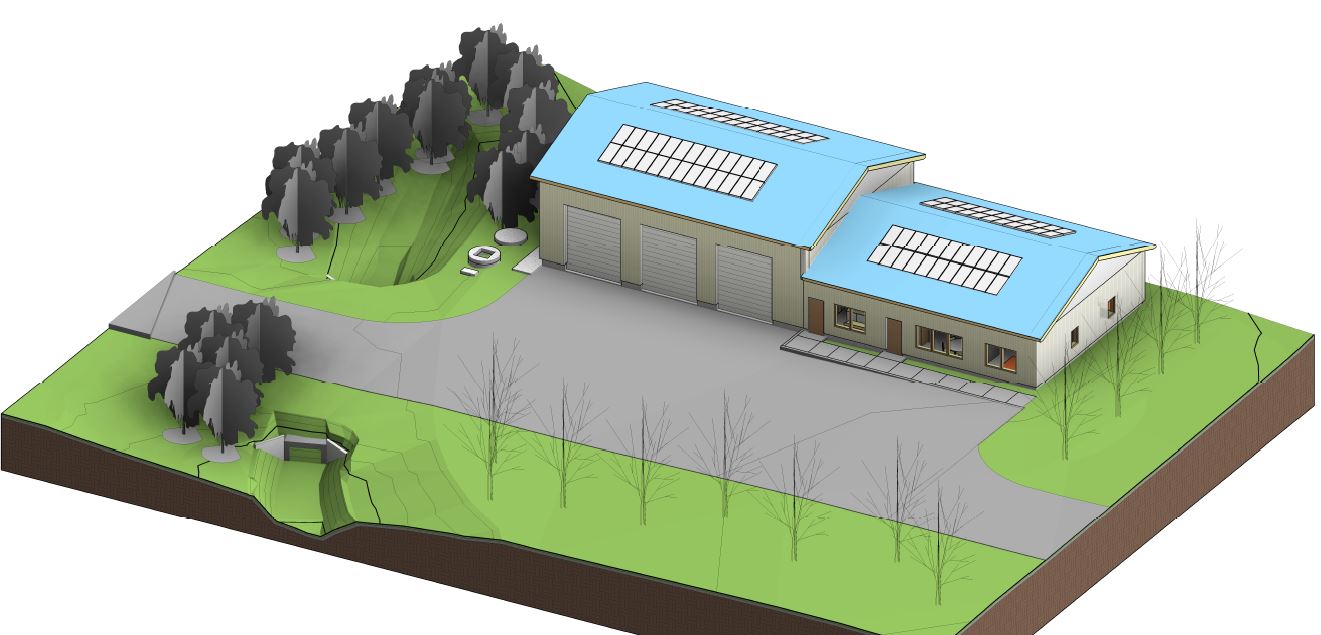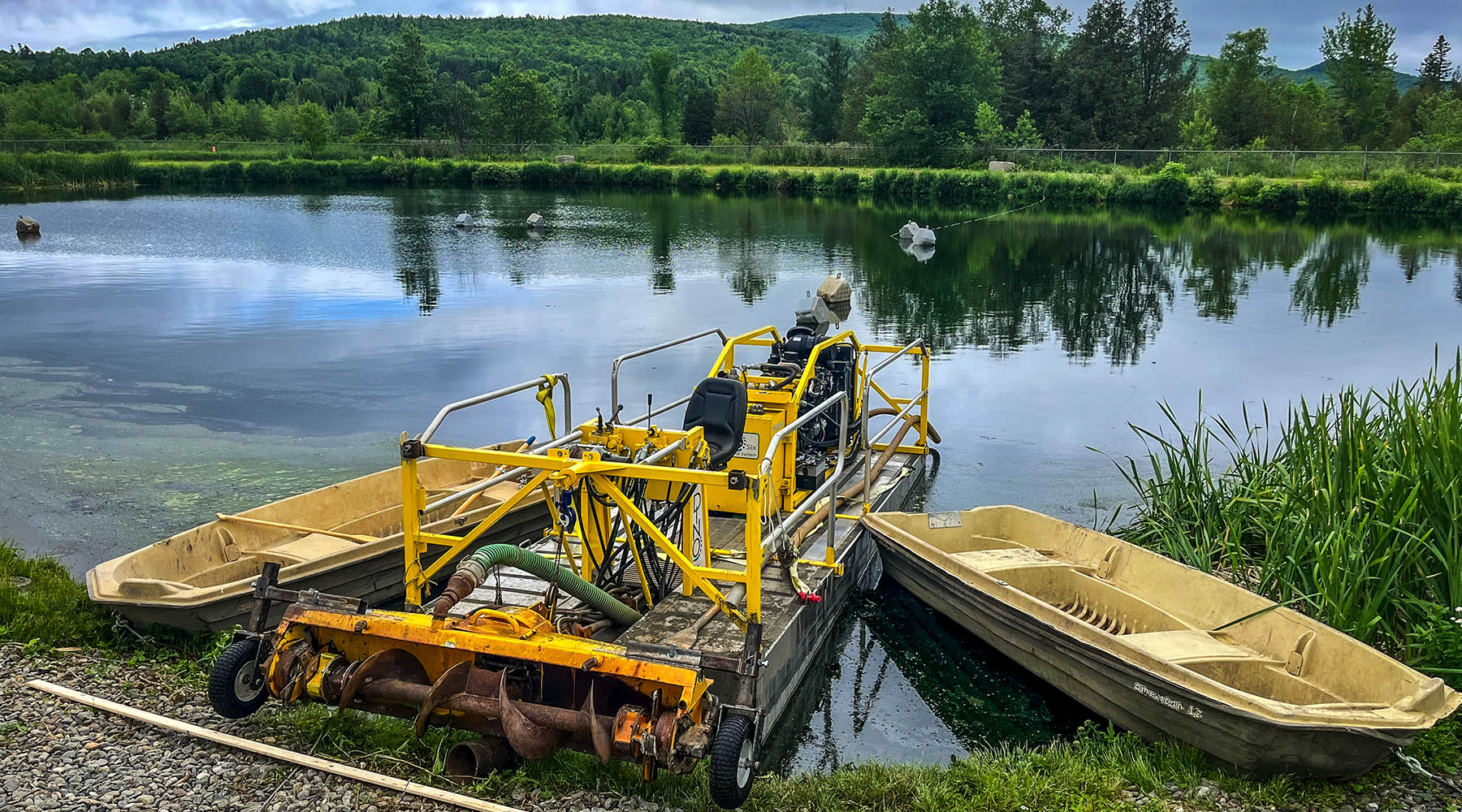Project Manager Audrey Beaulac recalls one of her most memorable projects from 2019 that stands out from the rest. It’s the story of a deteriorated culvert that wasn’t on the town’s to-do list but quickly became a priority when it failed its routine New Hampshire Department of Transportation (NHDOT) inspection. Her story is below:
Stickney Hill Road in Hopkinton, New Hampshire, provides residents quick access to I-89, is a highly utilized bicycle route for those that want to ride into Concord, and is a school bus route. In June 2019, NHDOT performed a routine bridge inspection of the 10-foot-wide Stickney Hill Road Bridge that conveys Boutwell Mill Brook beneath the roadway. The inspection revealed the corrugated metal pipe had deteriorated significantly since the previous inspection; NHDOT sent a letter to the town advising them that the bridge is at critical deficiency, requiring posting a BRIDGE CLOSED sign with suitable barricades at each end of the bridge to prevent vehicle use. As a result of this notification, the town closed the road and bridge to motor vehicles, but fortunately bicycle and pedestrian access and use was maintained for those wanting to connect to the regional trail network close by.
However, closing the road meant potential emergency response delays for residents in the area between the crossing and I-89, Exit 3. Exit 3 is not a full-service exit and only allows access from I-89 northbound and onto I-89 southbound. The detour included using Exit 2 of I-89 to reverse direction to utilize I-89 northbound from Stickney Hill Road or using Exit 2 to reverse direction to access Stickney Hill Road from I-89 southbound. The town line between Concord and Hopkinton is also between the crossing and I-89, which would cause issues for school buses when school starts in August. Additionally, mail and package carriers were impacted by the closure, and some even stopped delivery. The town wanted to reopen the important roadway as soon as possible.

Thinking outside the box, and knowing lead time to cast a precast concrete culvert could take months, the town asked Hoyle Tanner if the culvert they just had cast for the culvert replacement project they were currently working on along Briar Hill Road would provide the necessary hydraulic capacity required to convey Boutwell Mill Brook beneath Stickney Hill Road – and if it would be structurally strong enough to support the road and earth materials at that location. The town was a week away from installing the Briar Hill Road culvert but quickly switched directions when the Stickney Hill Road bridge replacement became a priority. Since Hoyle Tanner designed the precast box culvert for the Briar Hill Road project, we took a look at the size and design and compared it to what would be required for the Stickney Hill Road location. Upon further investigation, the similarities of the two sites proved advantageous, allowing for the already-cast Briar Hill Road culvert to be used for the Stickney Hill Road location.
With a quick replacement solution in hand, all that was left was the permitting. Since there would be wetland impacts at the crossing needed in order to replace the structure, a wetland permit would be required from the New Hampshire Department of Environmental Services (NHDES) with final approval from the Army Corps of Engineers. On behalf of the town, Hoyle Tanner coordinated with NHDES and initially sought Emergency Authorization to repair the crossing. The structure was subsequently determined to not be an immediate threat, and the standard process was used for wetland permit application and approval.
As time was of the essence, Hoyle Tanner quickly finalized the design and coordinated with NHDES. Upon approval of the wetland permit by NHDES and concurrence by the Army Corps of Engineers, the town’s contractor began construction in the fall and opened the roadway to traffic in late fall 2019.
“Hoyle Tanner is wonderful to work for and that is why the Town keeps working with Hoyle Tanner.”
Dan Blanchette, Director of Public Works
The project’s primary goals were to utilize the already-precast structure the town had on hand and open the roadway to through traffic before winter. The town was grateful Hoyle Tanner was able to meet their goals and remain on budget. Dan Blanchette, the Director of Public Works said, “Hoyle Tanner is wonderful to work for and that is why the Town keeps working with Hoyle Tanner.” And don’t worry, Briar Hill wasn’t forgotten, the town got a new culvert cast right away and was able to complete that project, as well.
This article was written by Audrey Beaulac, PE.










